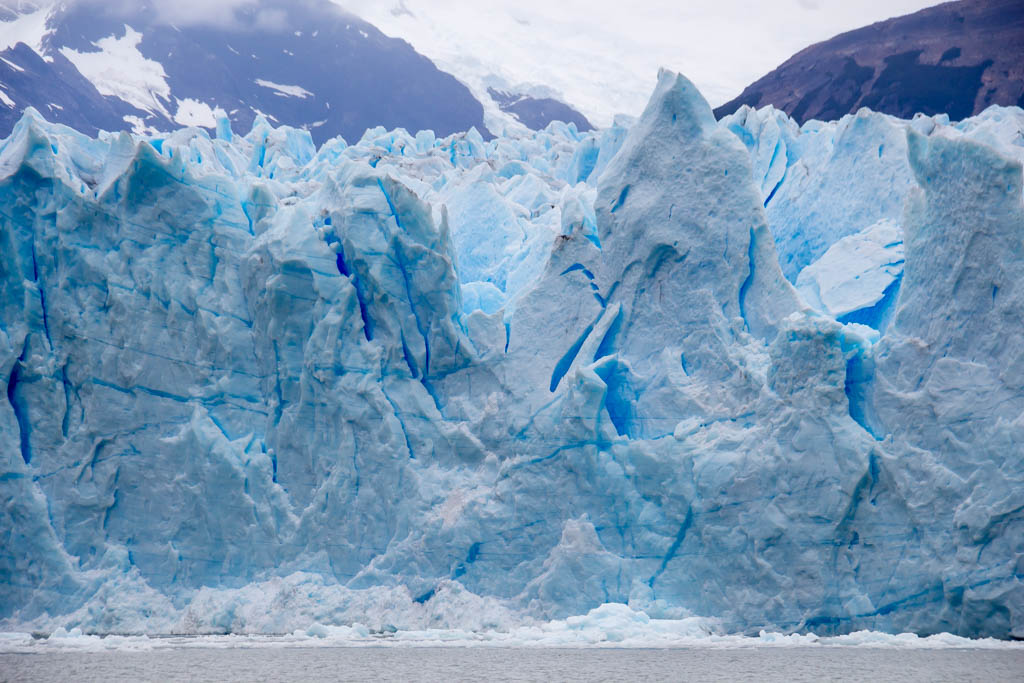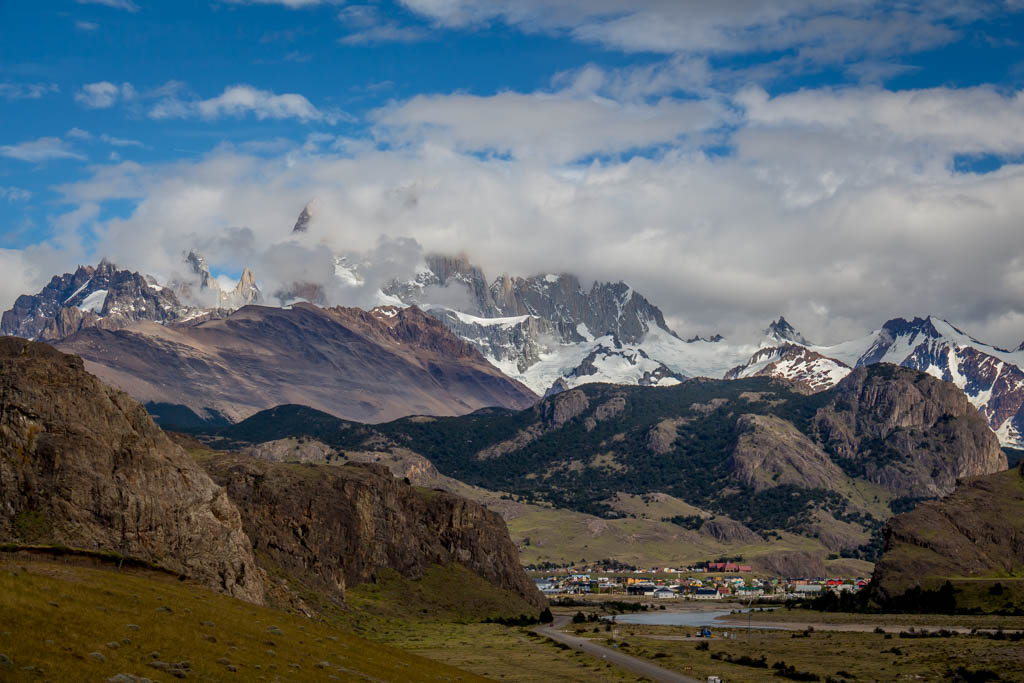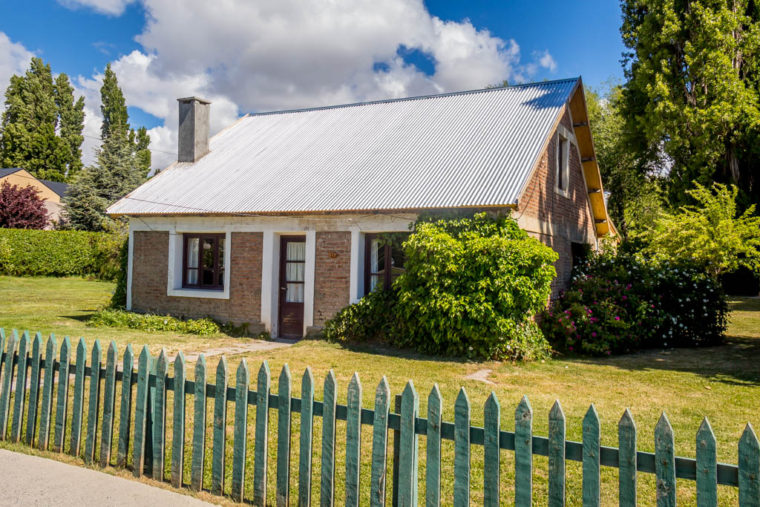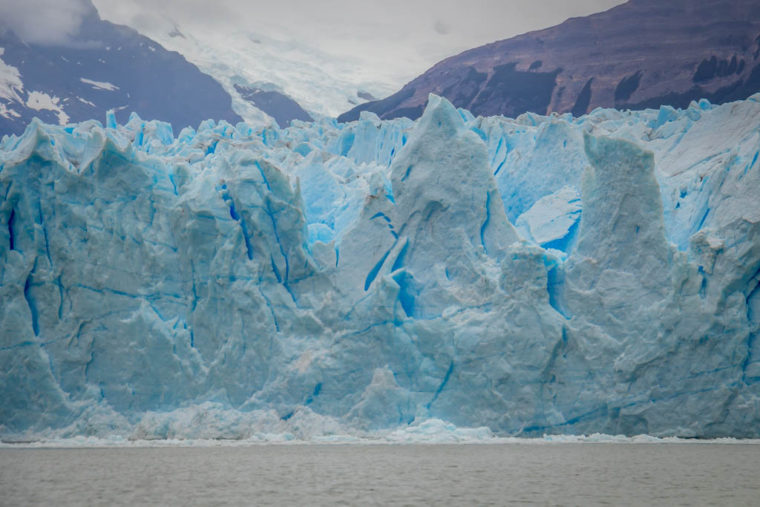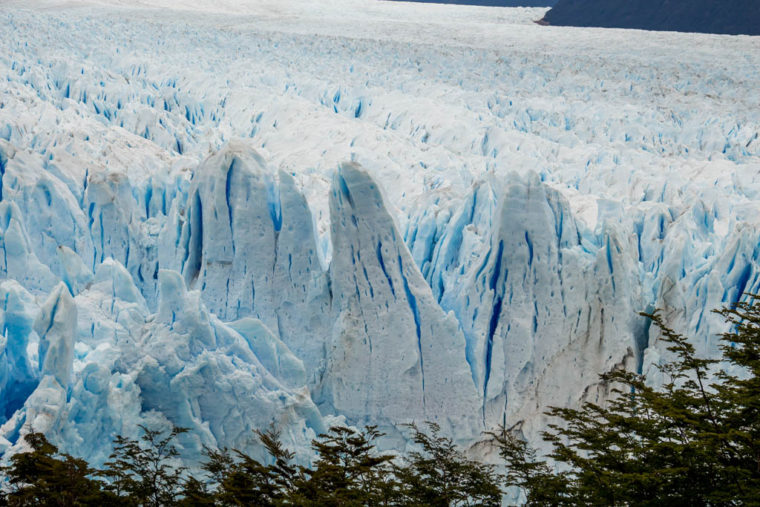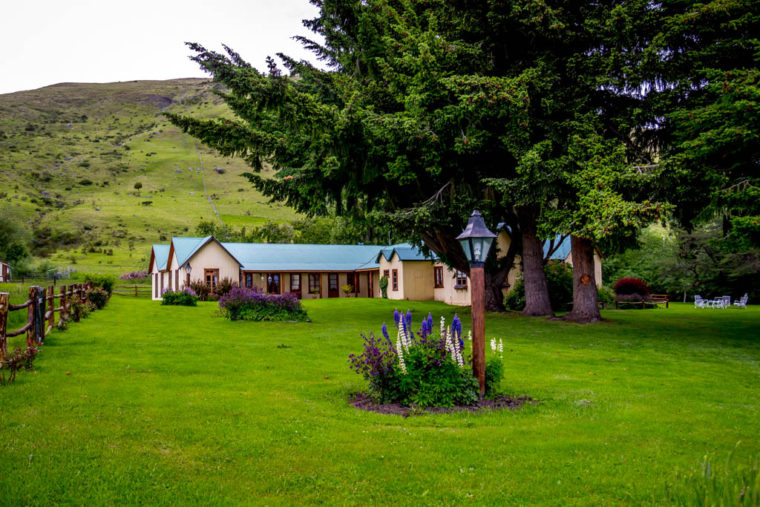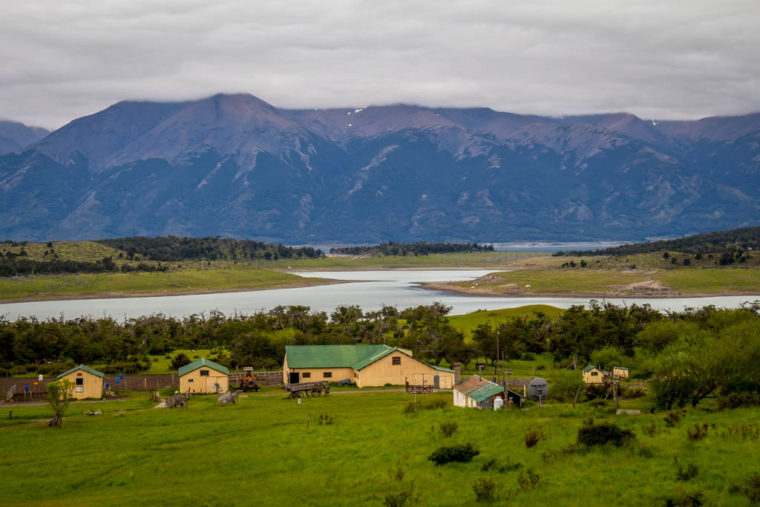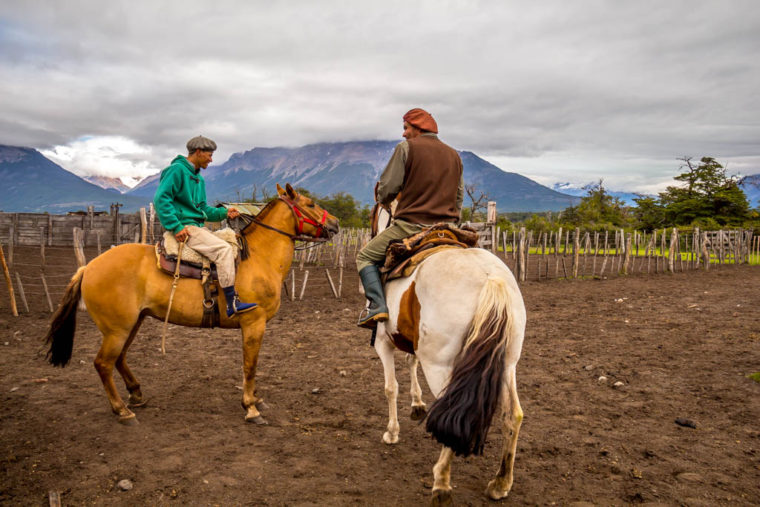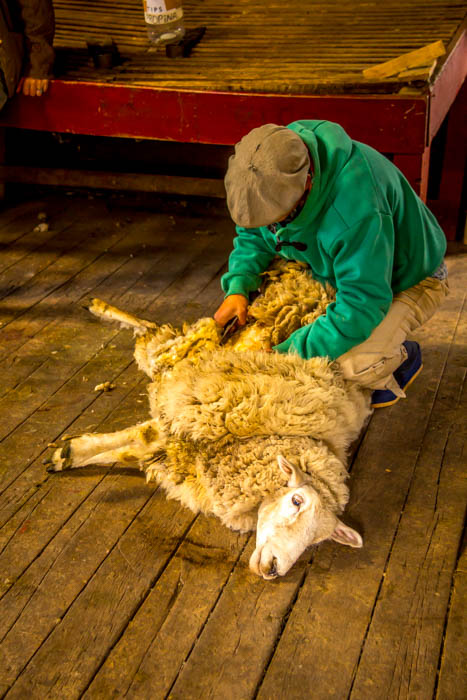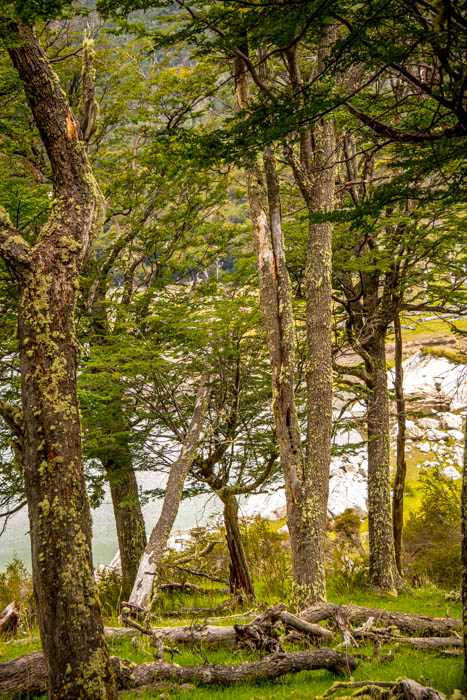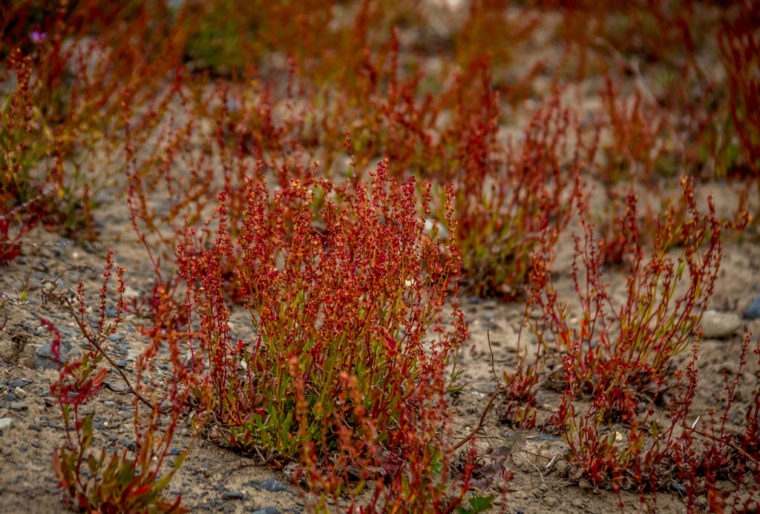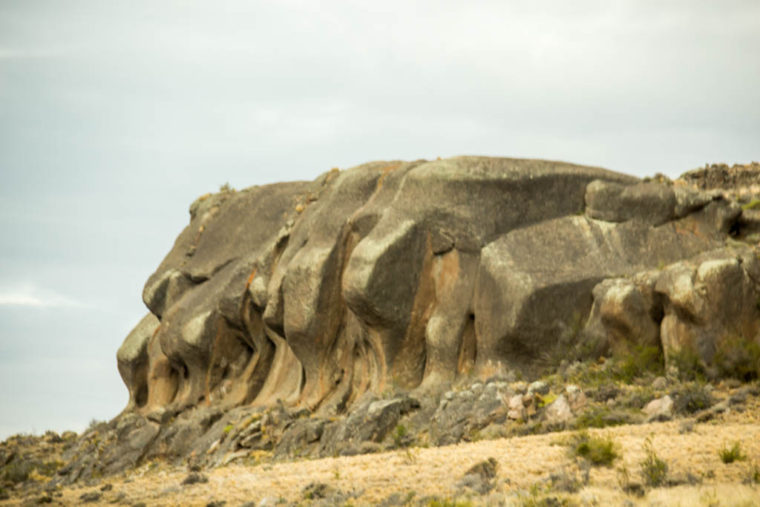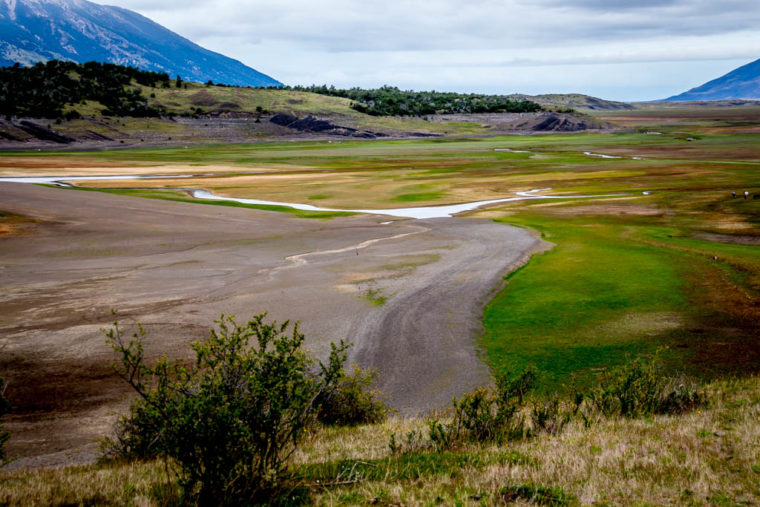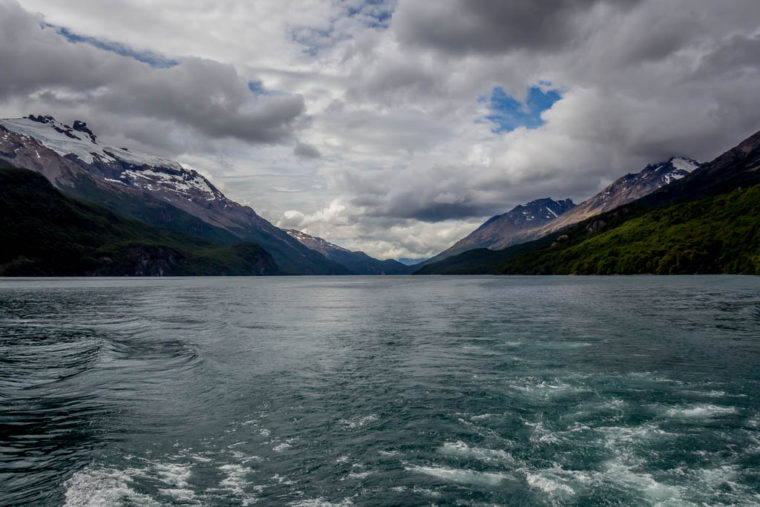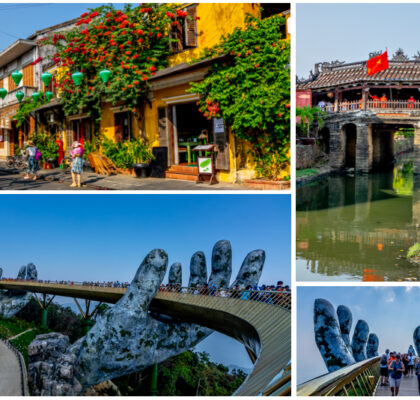El Calafate
The flight from Ushuaia to El Calafate is a short trip. It only takes 1 1/2 hours, and airports are at both locations close to the city.
From the airport I took a shuttle bus into town. Although I were to stay very central, my hostel was one of the last ones on the list, so I immediately got an impression of the city, as there were passengers to many different hostels (or hosterias, as they are known here) in all corners of the city. El Calafate has as in Ushuaia one main street, where with few side streets you will find everything. It’s a small town, although it spreads over a large area and everything here seems to be about tourism.
El Calafate lays in the Patagonia glacier area and was founded in 1927. It is named after the Berberis bush El Calafate, which grows everywhere in Patagonia, and next to a very large lake – Argentino. It’s the huge glacier Perito Moreno and the National Park Los Glacieres that is the big attraction for the city.
The Argentino lake is deep, the water very cold and there is virtually no life in it. The sun hits only the surface of the water so that nothing can grow in the lake to feed fish or anything else. Because of the minerals separated from the water from the glaciers the color of the lake is turquoise.
Another major attraction in the area is the town El Chalten with Mt. Fitz Roy, which is a kind of paradise for hikers and climbers.
Perito Moreno
The glacier is enormous and special as it not like many others, are sliding into the water, but stops abruptly with mega high walls. Whether you sit in front of the glacier in a small boat or standing in front of it, on one of the walkways built right in front of the glacier, one can not but feel very impressed and very small.
The glacier ends in a kind of snout and has a long wall on both sides. You can constantly hear the ice breaking off, and if you are quick, you will also see ice falling into the water. In the lake in front of the glacier there are small icebergs in many sizes floating around in the water.
When the sun is shining the glacier is entirely white, while on a cloudy day as when I was there, it becomes bluish.
The glacier is one of the few that increases and about every four years, something very special occurs. During that period huge masses of water are building up behind the glacier, before it in a scathing noise is breaking down in an inferno of snowmelt and ice blocks. It happened in late March 2016, but in fact there was a period from 1988 when there were 16 to 17 years without it happening. With nature you can never be sure❄
It is possible to take a bus the approximately 80 km from El Calefate out to the glacier. The trip takes about 1 1/2 hours each way, and everyone has the opportunity to see it, as there is an elevator to take you down on a platform in front of the snout of the glacier. When you walk the various trails on several levels you can see the “wall” (total of 5 km) on both the southern and northern side.
To see the glacier, I chose a trip where I also saw it from a boat. It was a great trip, which took all day. We saw the countryside, heard stories about the battles that had taken place in the area between Chile and Argentina, before they got the border settled in 1903. We hard about Francisco (Perito) Moreno, who gave name to the glacier. (Perito means specialist / expert).
Moreno has had a tremendous impact on Argentina and Patagonia. He helped to map Patagonia, which until then had been an unexplored area. He also gave Lake Argentino its name, to give it a sense of belonging to Argentina. He helped to resolve the border settling in the area between the two countries. Chile wanted the border, so lakes and glaciers, where the rivers run into the Pacific, should belong to Chile, while they should belong to Argentina when they ran out into the Atlantic. It would be a great advantage for Chile
Alternatively, they could – like other places – use the Andes Mountains highest peaks. It would favor Argentina. Moreno argued that the mountains would not change as opposed to draining from the lakes. Besides, you can manually change the way a river flows. Moreno helped Argentina by demonstrating that the lakes had originally been draining to the Atlantic. There should also be lakes with drainage to both sides. With some help from other countries they got the lakes shared between them, but there has been, as late as up to the 1980 border clashes between the two countries. Last when Argentina argued that some islands in the Beagle Channel were Argentinian. With the help from the Pope an outright war was avoided, but shortly after the turmoil in 1982 came the Falklands War, where Chile under Pinochet, chose to support England to the dismay of Argentina. That war is still an open wound, especially in southern Patagonia. The later years of politics in Chile, has however supported Argentina.
Estancia Nibepu Aike
For lunch we visited a farm close to the glacier. We had plenty of grilled lamb and beef, salad, good red wines and crepes with the Argentine specialty – Dulche de Leche. It is extremely sweet, but when you are in Argentina you must of course taste it.
At the farm we saw Gauchos (Argentinian cowboys) show their skills on horse and we saw how, in the old days, they hand cut a sheep. In Spanish, we also got the history of the farm. I will refrain from repeating that, but I was told that sheep was practically the only thing the first settlers, could breed, and the work to transport wool across the pampas to the Atlantic Ocean was very lengthy and burdensome. One can not help thinking that the life they moved from – perhaps in Denmark, must have been really hard when they choose to settle in a place where everything was so spartan and cumbersome. A plus has probably been that in Argentina they were happy to get residents in the area, so they gave them the land free of charge.
The route to the gleacier
After lunch we were picked up by the boat that would take us out to the glacier, but first we went on a small hike through forest and beach, where we were lucky enough to get quite close to a condor. Back on the boat we sailed close to the glacier and it was impressive to see it so close up and not least experience how high it is (74 m). The experience was celebrated with a whiskey served with ice from the glacier.
The last stop was the view from the walkways, and since it was now late in the day, there were not a lot of other people. Experiences are just better when you do not go in a long line, but has time to digest the impressions on your own, and it was an amazing sight also here. When you look across the glacier, there is ice as far as you can see. It is not easy to describe. It must be experienced.
There is only one paved road to the glacier, but in the morning we went by a new road – dirt road all the way. Although it was roughly the same nature, it was different going back. A different landscape and more colors, so something new breathtaking to look at.
The trip was on the expensive side, but it’s one of the best tours I’ve been on not just on this trip. It was super well organized, a great tourguide, a small but good group of people and some unique experiences.
When traveling, as I do, it’s also fun. One day I shared a shuttle bus with a lot og people staying at hostels. It is mostly young people, but all ages are represented. The next day on this tour all others were picked up from hotels. On this trip there were a young couple, but the rest og us were probably 50+, and we were all from Europe.
El Chalten
At the foot of the famous Mt. Fits Roy you find El Chalten, unfortunately the top of the mountain was covered with clouds, so I did not see it. It is a relatively new town built in 1985, but the area has been inhabited much longer and one of the first settlers, was a Dane named Madsen. His house is now owned by one of his descendants and is a museum. Madsen is known in the area, as he has written a book about his life and how it was to be a settler around 1903. Following Madsen’s book, a lady of Danish descent has recently published a book with a number of private photos from that time. The images are collected from families that lived in the area, and here you can see by judging the names, there has been a colony of Danes and other Scandinavians.
El Chalten is a small charming town. It is actually inside the giant National Park, but because you are not allowed to live in the National Park, the city is excluded. They founded the city to get people to stay in the area and avoid more border discussion with Chile, but today it is exclusively a tourist town.
The national park is enormous with water running everywhere. In some places the river was as big as a lake. After a good hours drive we arrived at the lake Del Sierto from where we boarded a boat to see another glacier.
The return journey went the same route as the outward journey past Lake Viedma and its glacier and around Lake Argentino before we were back in El Calafate. It was a long trip with another great tourguide who told some of the stories, I had heard the day before, but also more specifically information for this trip. I was the only one who needed it in English, since the rest of the company were all from Argentina. Fortunately I was sitting right behind him so he could easily tell it directly to me.
Summary
After a couple of very long days with many kilometers in a car, I rented a bike on my last day to get a tour of the town and along the lake. The weather was ok, but it is very very windy in Patagonia. When I arrived, I wondered why the old part of the city was not turned towards the lake, but on the bike ride, I got the answer💨. However a nature reserve with pelikans and other birdspecies had been created to make some activities at the lake.
A visit to El Calafate and the surroundings is NATURE in capital letters. Perito Moreno glacier is unique, but the entire national park is special, and covers a huge area. When approaching by plane, it looked like a desert landscape with a very blue river, but then when you drive through the countryside, the landscape and the many colors are breathtaking.
It can highly recommend a visit El Calafate and the Los Glaciares National Park.
Thanks fro reading the blog and you can see more photos here
This entry was posted in Argentina, Destinations, El Calafate, South America